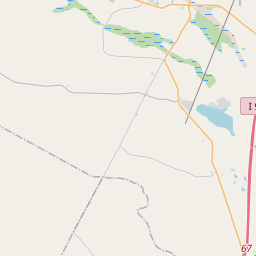Kilpatrick and Mower at Midway Church
Historical marker location:
Midway, Georgia
( Marker can be reached from Ocean Highway (U.S. 17) near Martin Street, on the right when traveling north.)
Marker installed: 1959













© OpenStreetMap contributors
Loading...
Searching for other points of interest within 3 miles of this location.The city of Savannah, Georgia was the first planned city in America. It was laid out in a grid pattern with squares for public use, and this design was later copied by other cities throughout the country.
About Liberty County
Liberty County Timeline
Liberty County, Georgia has a rich and storied history that dates back to its founding in 1777. The county was named in honor of the American Revolutionary War, symbolizing the colonists' fight for freedom and liberty. During the war, Liberty County played a crucial role as a center for military operations and as a haven for patriots seeking refuge.
In the nineteenth century, Liberty County's economy thrived due to its agriculture, with rice and cotton being the primary crops. The county's location along the coastal region allowed it to participate in international trade, leading to the growth of prosperous plantations. However, the county also faced the dark stain of slavery, as enslaved Africans toiled on these plantations, enduring immense hardships and contributing to the county's economic success.
The Civil War brought significant changes to Liberty County. As Union forces advanced into the South, many enslaved individuals seized the opportunity to escape to freedom. The county's economy was severely impacted by the abolition of slavery, leaving many plantation owners struggling to adapt. After the war, a period of Reconstruction followed, with Liberty County gradually rebuilding and recovering from the devastation of conflict.
In the twentieth century, Liberty County experienced further growth and change. The county became a hub for military activity with the establishment of Fort Stewart in 1940, which played a crucial role in training soldiers during World War II and continues to be an important military installation today. The county's economy diversified, with the growth of industries such as lumber, paper production, and tourism. Today, Liberty County retains its historical significance, with numerous historic sites and monuments that showcase its pivotal role in the founding and development of Georgia and the United States.
In the nineteenth century, Liberty County's economy thrived due to its agriculture, with rice and cotton being the primary crops. The county's location along the coastal region allowed it to participate in international trade, leading to the growth of prosperous plantations. However, the county also faced the dark stain of slavery, as enslaved Africans toiled on these plantations, enduring immense hardships and contributing to the county's economic success.
The Civil War brought significant changes to Liberty County. As Union forces advanced into the South, many enslaved individuals seized the opportunity to escape to freedom. The county's economy was severely impacted by the abolition of slavery, leaving many plantation owners struggling to adapt. After the war, a period of Reconstruction followed, with Liberty County gradually rebuilding and recovering from the devastation of conflict.
In the twentieth century, Liberty County experienced further growth and change. The county became a hub for military activity with the establishment of Fort Stewart in 1940, which played a crucial role in training soldiers during World War II and continues to be an important military installation today. The county's economy diversified, with the growth of industries such as lumber, paper production, and tourism. Today, Liberty County retains its historical significance, with numerous historic sites and monuments that showcase its pivotal role in the founding and development of Georgia and the United States.
Liberty County Timeline
This timeline provides a glimpse into the major events and milestones that have shaped the history of Liberty County, Georgia.
- Pre-1732: Liberty County is occupied by Native American tribes, including the Yuchi and Creek.
- 1732: The area is included in the British colony of Georgia following the granting of a charter to James Oglethorpe.
- 1752: The Parish of St. John is established in the area that will later become Liberty County.
- 1777: Liberty County is officially established as a county of the state of Georgia.
- 1793: Riceboro, the county's first settlement, is established.
- 1818: Hinesville is established as the county seat.
- 1833: Midway Museum is built, showcasing the area's history and culture.
- 1850s: Liberty County flourishes with the success of the rice and cotton industries.
- 1865: The Civil War comes to an end, with Liberty County having been occupied by Union forces for most of the conflict.
- 1906: The Liberty County Courthouse is constructed in Hinesville.
- 1940s: The establishment of Fort Stewart brings significant economic and population growth to the county.
- 1983: The Liberty County Historical Society is founded to preserve and promote the county's history.
- 2005: The Historic Dorchester Academy is listed on the National Register of Historic Places.